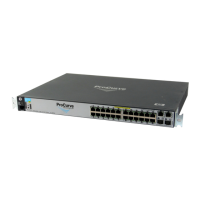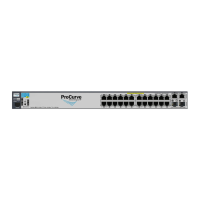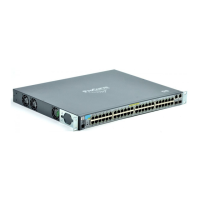8-17
Time Protocols
TimeP: Viewing, Selecting, and Configuring
For example, if you configure the switch with TimeP as the time synchroniza-
tion method, then enable TimeP in DHCP mode with the default poll interval,
show timep lists the following:
Figure 8-10. Example of TimeP Configuration When TimeP Is the Selected Time
Synchronization Method
If SNTP is the selected time synchronization method),
show timep still lists the
TimeP configuration even though it is not currently in use:
Figure 8-11. Example of SNTP Configuration When SNTP Is Not the Selected Time Synchronization Method
Configuring (Enabling or Disabling) the TimeP Mode
Enabling the TimeP mode means to configure it for either broadcast or unicast
mode. Remember that to run TimeP as the switch’s time synchronization
protocol, you must also select TimeP as the time synchronization method by
using the CLI timesync command (or the Menu interface
Time Sync Method
parameter).
Syntax: timesync timep Selects TimeP as the time protocol.
ip timep < dhcp | manual > Enables the selected TimeP mode.
no ip timep Disables the TimeP mode.
no timesync Disables the time protocol.
Enabling TimeP in DHCP Mode. Because the switch provides a TimeP
polling interval (default: 720 minutes), you need only these two commands for
a minimal TimeP DHCP configuration:
Syntax: timesync timep Selects TimeP as the time synchronization
method.
ip timep dhcp Configures DHCP as the TimeP mode.
Even though, in this example, SNTP is the
current time synchronization method, the
switch maintains the TimeP
configuration.
!Software.book Page 17 Thursday, October 10, 2002 6:10 PM
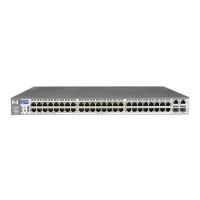
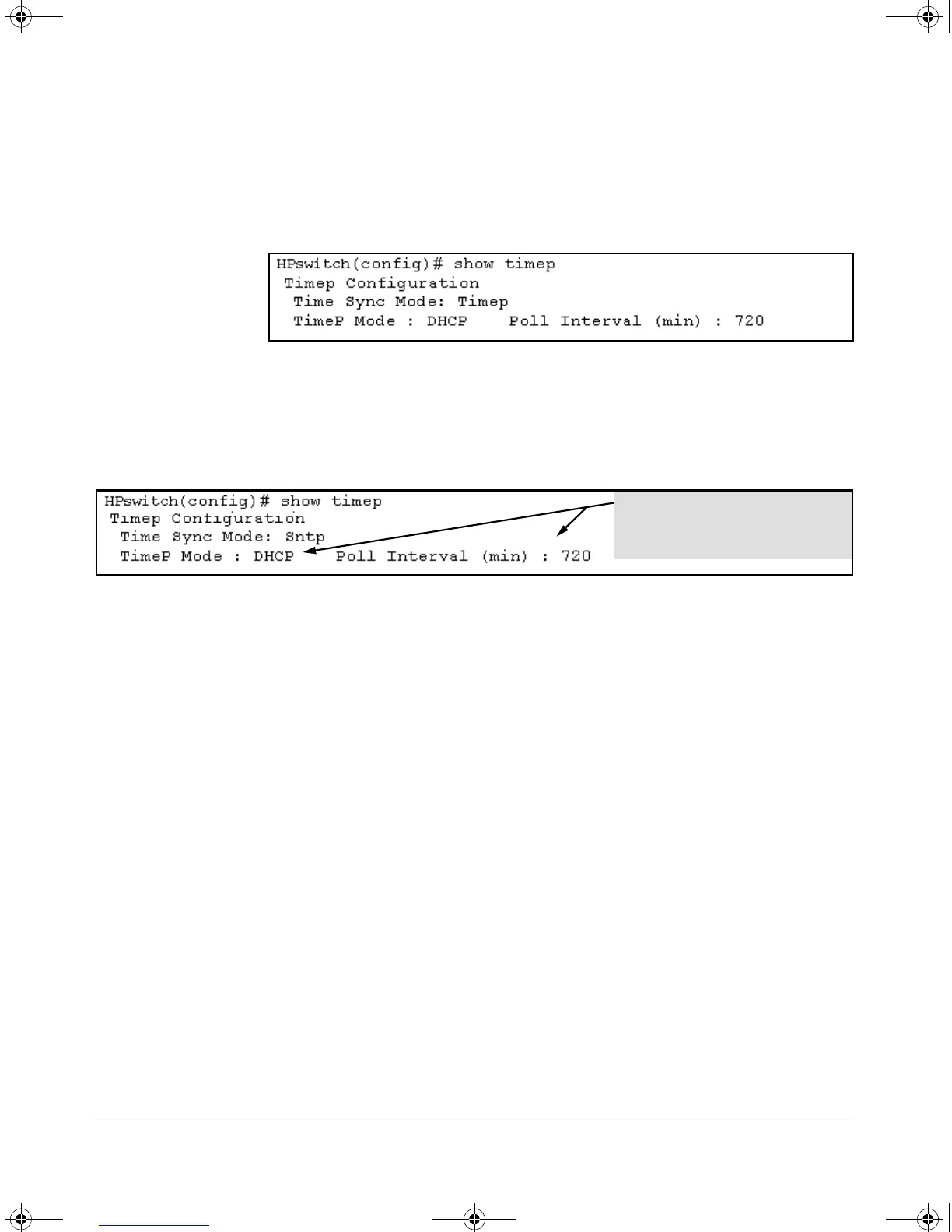